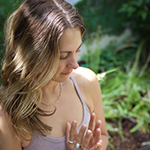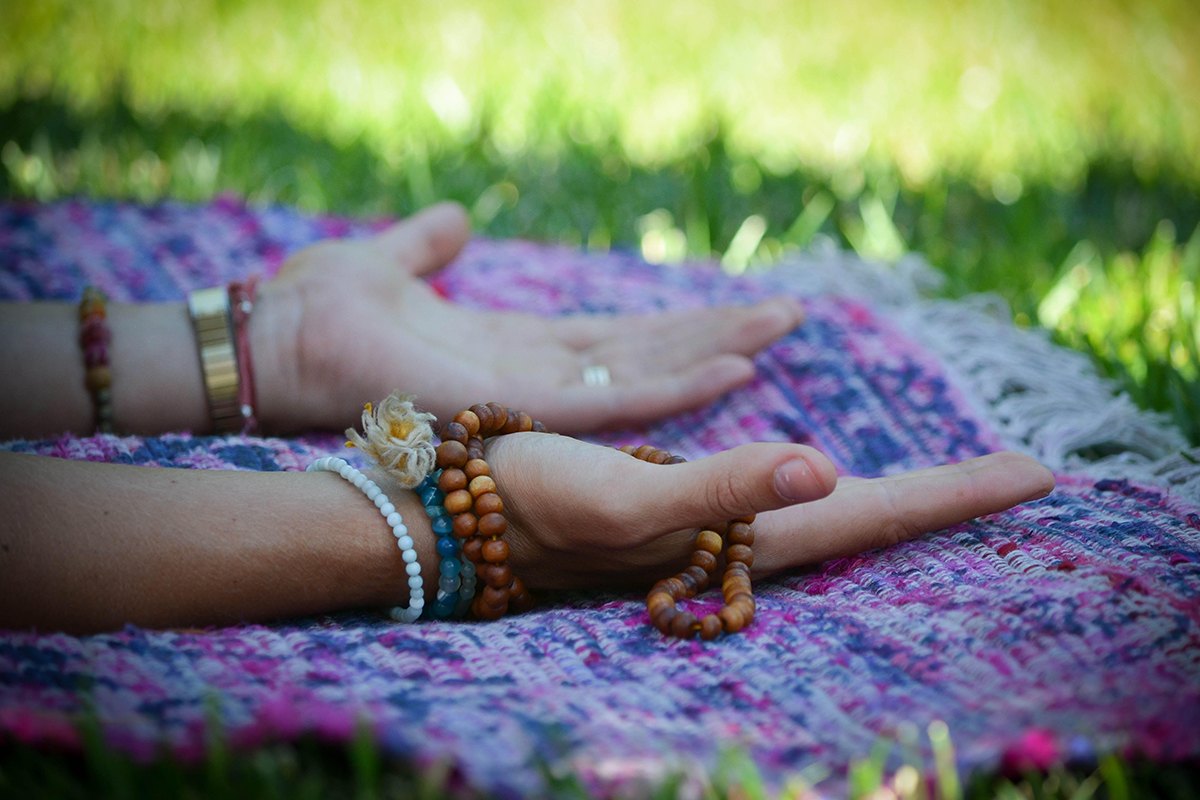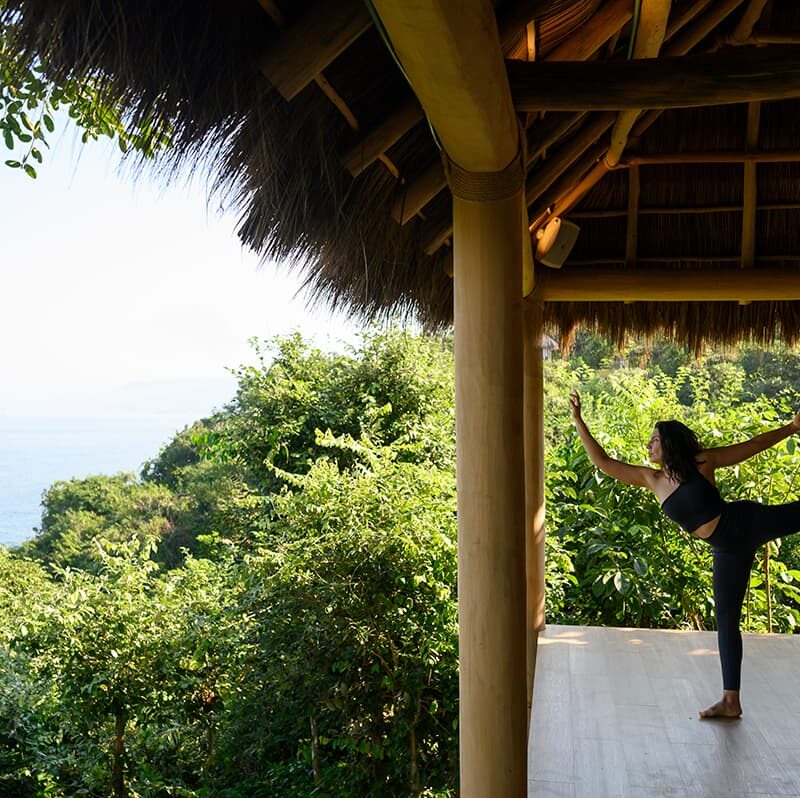Establishing Ritual + Ceremony in Your Everyday Life.
Xinalani's All Inclusive Packages
Adding rituals and ceremonies to my morning routine has been life-changing and I hope to share the value here with you. To be fair, I’ve always been a morning person, but adding a little intention has completely changed my mornings from being a struggle into something I look forward to. I actually find myself waking up before my alarm clock and getting out of bed easily with purpose and motivation.
Beautiful Eco Chic Rooms and Beach Casitas
Amidst the hurry burry of modern-day life asking you to add more to your day may feel impossible. The truth is whether intentional or not you most likely already perform some sort of morning ritual—although it may not feel like a ceremony—that can be changed with a little intention. Take a moment to think about all the things you did to get yourself out of bed and out the door this morning. The alarm went off, you washed your face, brushed your teeth, got dressed, got the kids ready for school. Did you eat breakfast? Did you have coffee or tea at home?
Perhaps when you hear the words “ritual” and “ceremony” it conjures an image of a complicated and time-consuming series of events. In reality, a morning routine with intention is customizable to you and your life. It can really take as little as 2 minutes of incorporated time to start your day with meaning and purpose. Just like with anything that you practice, you will get good at it. The groove, the neurological pathway deepens, and then one day it is automatic, without thought, an ingrained behavior something important and essential to you and your everyday existence.
With the intention your morning and evening ceremony get more important, they take up more space, they build momentum and suddenly it’s hard to remember a time in your life when that wasn’t something you got up 5, 10, 15, 30 minutes earlier for. Change can be uncomfortable and scary, yet the irony is that it’s the ONLY constant in life. So how do we create calm and order in a world that is constantly churning asking us to be flexible and adaptable to our environments on the regular? Enter Dinacharya. This is an ayurvedic practice that means morning ritual, or routine. I like to think of the morning and evening times as bookends to my day. Ritual holds everything together like glue and creates stability when everything else seems to be shifting around me and underneath me.
Ritual + Ceremony
If you don’t like the words “Ritual + Ceremony” feel free to swap them out for routine. Me? I like the idea of a little mysticism thrown in there. These words spark an image of goddess energy which is ethereal and powerful if we believe in it. I was recently inspired by the words of Joan Didion: “Later after I married and had a child, I learned to find equal meaning in the repeated rituals of domestic life. Setting the table. Lighting the candles. Building the fire. Cooking”. **
My morning ritual
Actually begins the night before; I set myself up for success at bedtime.
- I set out my clothes (so I don’t have to expend mental energy staring at my closet bleary-eyed in the morning).
- I keep a journal and pen by my bedside to make a list of any nagging “to-dos” that won’t let me sleep if forgotten. Once on the page, I can rest easy knowing I will not forget!
- I take a moment to think about what my successes and gratitudes were for the day. I write a shortlist of 3-5 things that I can celebrate!
- I rub my feet with coconut oil (great for my Pitta Dosha) and add some soothing essential oils (recommended blend for Pitta is lavender and peppermint, which is cooling and calming)
- I read a novel and make sure it’s fiction. Which has the tendency to relax the brain through creativity and imagination, versus a brain-stimulating and analytic self-help type book?
The next day (the actual morning ritual ensues) this is how I love to start my day:
- I scrape my tongue. You can find tongue scrapers online or at your local health care store.
- I wash my face and eyes with cold water.
- I have a short yoga Nidra practice (30 min) if you are unfamiliar with yoga nidra I recommend looking for a local teacher or searching online for a short audio clip. Here’s one of my favorites by my grand-teacher (my teacher’s teacher) Rod Stryker, Yogarupa: https://www.facebook.com/RodStryker/videos/1936363426424667/ you can access more of Yogarupa’s meditations on his app Sanctuary: https://www.parayoga.com/sanctuary-meditation-app/
- I oil pull (I use coconut oil for pitta dosha) start with a one minute practice then work your way up to 20 minutes overtime - be patient with yourself! Oil pulling is a very simple practice with an unfortunate name. You simply put a spoon full of desired oil into your mouth swish it around (think mouthwash) without swallowing it for as long as you can. The oil is believed to remove toxins from the tissue in the mouth and provide a protective and whitening coating for the teeth.
- I sip a warm beverage. The Ayurvedic practice recommends warm water with lemon or non-caffeinated tea. To be quite frank, I love my morning coffee and still indulge as I see it as part of my ceremony and ritual. Sipping a warm beverage in the morning is said to stimulate Agni (digestive fire).
- I try to eliminate waste before eating anything solid. This is an Ayurvedic recommendation based on the idea that you wouldn’t want to add anything else to the garbage pile. If your food from the night before is still processing in your gut at 98.6 degrees and has not been fully assimilated or moved through your bowels than it still needs dedicated resources (such as stomach acid or gut bacteria to help aid in the digestive process), if you add extra food on top of that this can create toxicity in the gut which can lead to a whole host of extra problems. Agni (digestive fire) is the cornerstone of health from the Ayurvedic perspective so it should be treated with the utmost respect and severity. For more information on this topic see * source below.
After practicing the above for a few years, I now generally wake up feeling refreshed and without an alarm clock! But this has been years in the making so don’t be discouraged if it doesn’t magically happen for you within the first few weeks of establishing your own practice. The important thing to remember is that just like with anything in life once you fall out of your routine, it’s in the noticing that you’ve gotten a little off track that IS the success. Then you can make a conscious choice to start again. It’s as simple as that. Don’t make excuses for yourself. We all have them. I could give a laundry list of reasons why my practice couldn’t or shouldn’t work for me and I’m sure you could too. Your partner, your child, your boss need you. You’re not doing them any favors by not taking care of yourself. I can promise you that.
I began teaching and studying Yoga + Ayurveda four years ago which is when this practice and purpose really began to gain momentum for me. Before that, I had been practicing yoga for nineteen years. The idea of creating a ceremony and ritual to start my day really took hold for me during my 200 HR teacher training. I realized that I had the power to create a day, a life full of intention and meaning. And if I wasn’t the one creating that for me no one else would.
Dinacharya Acknowledgments + Sources
I draw on knowledge that I’ve gained throughout my studies with my yoga teacher, the world-renowned Rosie Acosta. In addition from working with Portland-based premier Ayurvedic practitioner Ann Wagoneer. I also find supplementing my in-person studies with scholarly texts to be a holistic approach. I recommend reading the likes of:
- “Prakriti: Your Ayurvedic Constitution” by Dr. Robert E. Svoboda *
- “The Year of Magical Thinking” by Joan Didion **
Addendum
If you’re new to Ayurveda I’ll provide a little more on the history and meaning below. The etymology of the word; Ayur meaning “life” and Veda meaning “study or science” thus the science of life is a way to translate Ayurveda.
- Developed in the Indus Valley of India over 5,000 years ago.
- Passed along orally for many 100s of years.
- The first written record appears in the Vedas, considered the oldest written knowledge in human history composed between 1,700-1,000 B.C.E. written by the Rishis (spiritually enlightened prophets).
- “Ayurveda is the sole system in the Vedas dedicated to health because our physical bodies are our vehicles for our spiritual experience” -- Sahara Rose.
- The Vedas intended for yoga and Ayurveda to be practiced together.
About the Author

Tessa Tovar is a writer, health coach, podcast author of “Outside the Studio”, yoga instructor and a perennial student in the Portland/Vancouver area. With a personal practice in Vinyasa, Bikram, Yin, Kundalini, and Hatha, Tessa leads well-rounded and healing yoga classes. Self-discovery is deepened through the use of meditation, pranayama, and mantras.
Tessa believes yoga is a vehicle to heal and attune ourselves to levels of deeper understanding. Creating a safe and sacred space for practice is accomplished through a combination of music, essential oils, and loving hands-on adjustments to foster peace and purpose for all students.
























